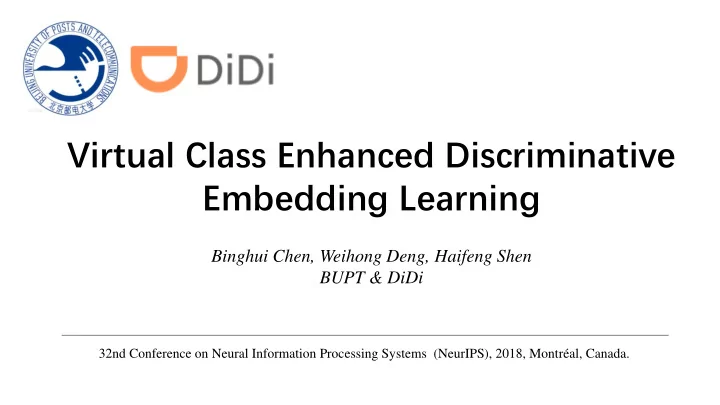

Virtual Class Enhanced Discriminative Embedding Learning Binghui Chen, Weihong Deng, Haifeng Shen BUPT & DiDi 32nd Conference on Neural Information Processing Systems (NeurIPS), 2018, Montréal, Canada.
Observation & Motivation • For d-dimensional feature space under Softmax classifier, the feature region of each class is inversely proportional to the number of class. Increase class number
Virtual Softmax : Learning towards discriminative image features - Formulation: inject a dynamic virtual negative class where - Optimization goal: Virtual class
- Optimization goal of Virtual Softmax: - The conventional Softmax learns towards a weaker goal: Objective comparison
Discussion : - Interpretation from Coupling Decay: (1) (2) perform the first order Taylor Expansion for the second log-term in Eq.2, a term of shows up. Therefore, minimizing the above equation is to minimize to some extend, and this can be viewed as a coupling decay term, i.e. Data-Dependent Weight Decay and Weight-Dependent Data Decay .
- Interpretation from Feature Update: For a linear neural layer, the Feature Update by Softmax and our Virtual Softmax is like: Softmax: Virtual Softmax:
Experiments : - Similar convergence and higher accuracy on CIFAR100 :
Experiments : - Visualization of Feature Compactness and Separability on MNIST :
Experiments : - Visualization of intra-class and inter-class similarities on CIFAR10, CIFAR100:
Experiments : - Performances on small-scale object classification datasets: - Performances on large-scale object classification and face verification datasets:
Thanks! http://www.bhchen.cn
Recommend
More recommend